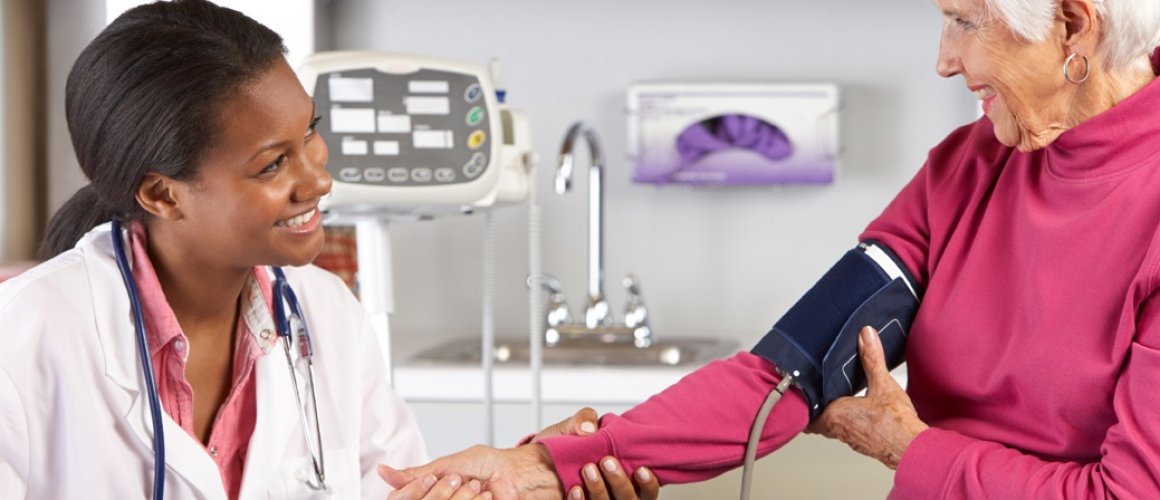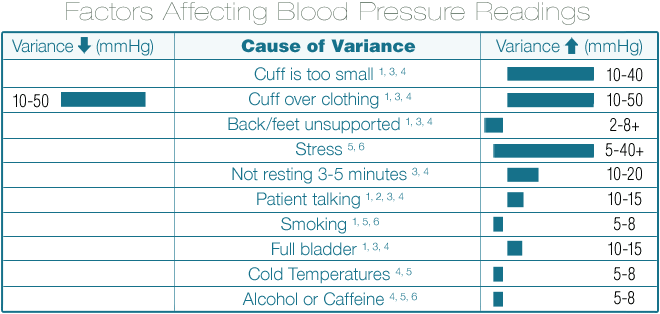- Products
- New Products
- Featured Products
- Color and Print Themes
- Blood Pressure Measurement
- NIBP / Vital Sign Monitors
- Digital Aneroid Sphygmomanometers
- Palm Aneroid Sphygmomanometers
- Pocket Aneroid Sphygmomanometers
- Pro's Combo Sphygmomanometers
- Multicuff Sphygmomanometers
- Clock Aneroid Sphygmomanometers
- Mercury Sphygmomanometers
- Home Blood Pressure Measurement
- Adcuff +
- Gauges
- Bulb & Valves
- Disposable Cuffs
- Reusable Cuffs & Bladders
- Sphygmomanometer Accessories
- Sphygmomanometer Parts
- Caseware
- CPR / Airway
- EENT
- Instruments & Accessories
- Laryngoscopes
- Penlights
- Pulse Oximeters
- Stethoscopes
- Thermometry
- Vital Signs Monitors
- Solutions
- About ADC
- Learning Center
- Support
- Blog
- Contact
Readings Unexpectedly High? 10 Factors that Affect Your Blood Pressure

Written By:
Marc Blitstein / President & CEO
Posted On:
August 01, 2022
Have you ever had a blood pressure reading that was higher than expected? Many people, including some healthcare professionals, don't realize just how volatile this vital sign can be. It’s constantly changing, sometimes minute by minute, in response to both physical and psychological stimuli. Mood, activity, and body position all influence blood pressure, sometimes dramatically: up to 40 mmHg.

If you get a reading that’s unexpectedly high, consider these 10 factors that may be causing significant, but temporary, deviations in your blood pressure measurements.
1. The blood pressure cuff is too small
Proper cuff fit is extremely important. Most blood pressure measurement errors can be attributed to not checking if the patient's arm circumference falls within the range indicators on the cuff. Studies have shown that using a cuff that's too small can cause a patient's systolic blood pressure measurement to increase 10 mmHg to 40 mmHg.1,3,4
2. The cuff is being used over clothing
When having your blood pressure measured, the cuff should always be placed directly on your arm. Studies have shown that clothing can impact a systolic blood pressure from 10 mmHg to 50 mmHg.1,3,4
3. Smoking before a measurement
Tobacco products (cigarettes, cigars, smokeless tobacco) all contain nicotine, which temporarily increases your blood pressure. Refrain from smoking at least 30 minutes before having a measurement taken.1,5,6
4. Drinking alcohol or caffeine before a measurement
Alcohol and caffeine (e.g., sodas, coffee, tea) consumption causes blood pressure levels to spike, so stay away from these at least 30 minutes before having a measurement taken.4,5,6
5. Engaging in activity before a measurement
Accurate blood pressure measurements require that you relax and rest quietly in a comfortable chair for three to five minutes before taking the reading. Any activities, including exercise or eating, can affect your systolic blood pressure measurement 10 mmHg to 20 mmHg.3,4
6. Arms, back, or feet are not properly supported
When having your blood pressure measured, you should be seated in a comfortable chair with your legs uncrossed and your back and cuff arm supported. If your back is not supported, your diastolic blood pressure measurement can increase by 6 mmHg. Crossing your legs has shown to raise your systolic blood pressure by mmHg 2 to 8 mmHg. Positioning of your upper arm below your heart will also result in higher measurements, whereas positioning your upper arm above your heart level will give you lower measurements. These differences can affect your systolic blood pressure 2mmHg for every inch above or below your heart level.1,3,4
7. Room temperature
Blood pressure tends to increase when you are cold. If you are at the doctor's office and the room temperature is chilly, your blood pressure readings may be higher than expected.4,5
8. Talking during measurement
Talking to the nurse, doctor, or anyone else during a reading can increase systolic blood pressure measurement as much as 10 mmHg to 15mmHg.1,2,3,4
9. A distressed emotional state
Stress and anxiety can cause large increases in blood pressure. If you are having a measurement taken while thinking about something that causes you to tense up or become stressed, your blood pressure levels could be significantly higher than normal.5,6
10. A full bladder
Your blood pressure is lower when your bladder is empty. As your bladder gradually fills, your systolic blood pressure increases, by as much as 10 mmHg to 15mmHg.1,3,4
As you can see, small changes in your body, environment, or activities all have a potential impact on your blood pressure readings. Whether a measurement is being taken in a healthcare office or at home, proper technique is essential. Paying attention to these details can help avoid a misdiagnosis of hypertension and inappropriate prescription of anti-hypertension medication.
Notes:
-
Handler, Joel. The Importance of Accurate Blood Pressure Measurement. The Permanente Journal (2009) 13:3: 51-54
-
Long, JM., J.J. Lynch, N.M Machiran, SA Thomas, KL Manilow. The effect of status on blood pressure during verbal communication. Behavior Science (2004) 5:2: 165-172.
-
O'Brien E, R. Asmar, L Beilin, Y Imai, J. Mallion, G. Mancia, T. Mengden, M. Myers, P. Padfield, P. Palatini, G. Parati, T. Pickering, J. Redon, J. Staessen, G. Stergiou, P. Verdecchia. European Society of Hypertension recommendations for conventional, ambulatory, and home blood pressure measurements. Jounral of Hypertension (2003) 21: 821-848.
-
Pickering, T.G., J.E. Hall, L.J. Appel, B.E. Falkner, J. Graves, M.N. Hill, D.W. Jones, T. Kurtz, S.G Sheps, E. J. Roccella. Recommendations for Blood Pressure Measurement in Humans and Experimental Animals: Part 1: Blood Pressure Measurement in Humans: A Statement for Professionals From the Subcommittee of Professional and Public Education of the American Heart Association Council on High Blood Pressure Research. Hypertension (2005) 45:142-161.
-
http://www.infobloodpressure.com/factors-affecting-BP-readings.html
